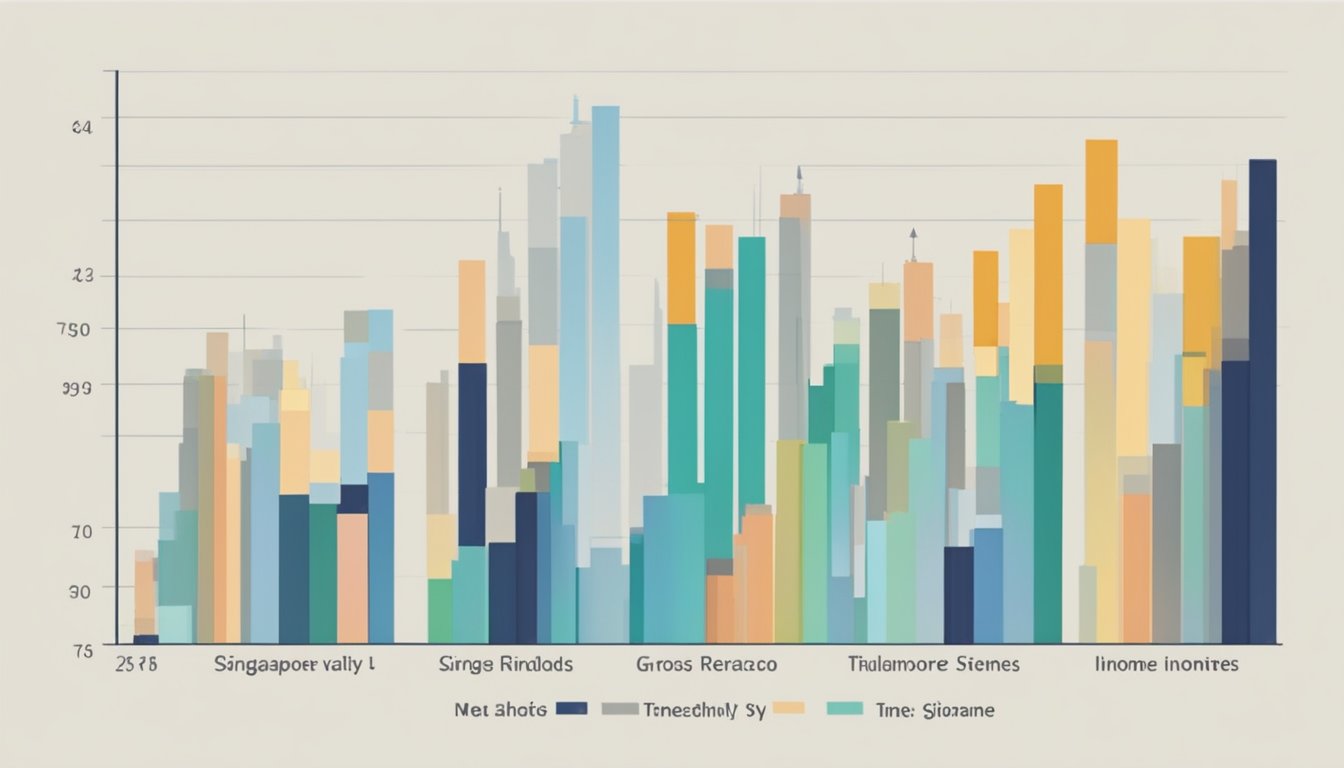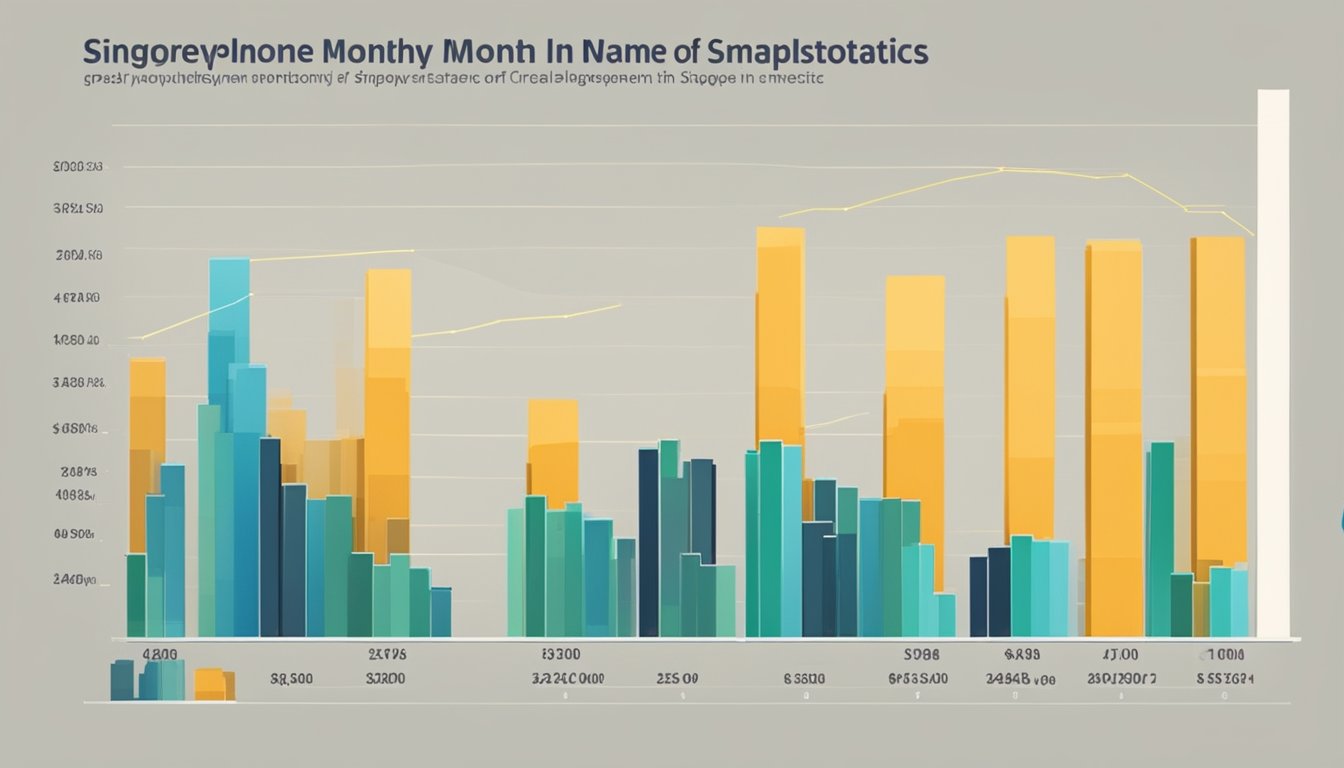Introduction:

If you are working in Singapore, understanding your gross monthly income is essential to managing your finances and planning for the future. Gross monthly income is the total amount of income you earn before any deductions or taxes are taken out. This includes your salary, bonuses, and other forms of compensation. Knowing your gross monthly income is important because it determines how much you can save, invest, and spend each month.
Understanding Gross Monthly Income:
Gross monthly income is the widest measure of income from employment, covering both employees and the self-employed. It is a key indicator of economic well-being and is often used to compare income levels across different sectors and industries. In Singapore, the Ministry of Manpower publishes regular reports on gross monthly income from work, which provide valuable insights into income trends and employment statistics.
Income Trends in Singapore:
Over the past decade, gross monthly income in Singapore has steadily increased, driven by strong economic growth and a competitive job market. However, income inequality remains a concern, with some sectors and industries experiencing higher levels of income growth than others. It is important to understand these trends and how they may impact your own income and career prospects.
Key Takeaways
- Gross monthly income is the total amount of income you earn before any deductions or taxes are taken out.
- Understanding gross monthly income is important for managing your finances and planning for the future.
- Income trends in Singapore have been positive overall, but income inequality remains a concern.
Understanding Gross Monthly Income

If you are a salaried employee, you might have heard the term “gross monthly income” thrown around at work. But what exactly does it mean? In this section, we’ll break down the components of gross monthly income and show you how to calculate it.
Components of Gross Income
Gross monthly income is the total amount of money you earn before any deductions are made. It includes your basic wages, overtime pay, bonuses, allowances, commissions, tips, and other allowances. Additionally, one-twelfth of your annual bonuses is also included in your gross monthly income.
Your basic wages are the amount of money you earn for the work you do, not including any additional payments. Overtime pay is the extra money you earn for working beyond your regular working hours. Bonuses are additional payments made to you on top of your basic wages, usually for good performance or meeting certain targets. Allowances are payments made to you to cover specific expenses, such as transportation or housing. Commissions are payments made to you based on the sales you make, while tips are payments made to you by customers for good service.
Calculating Gross Monthly Income
Calculating your gross monthly income is simple. If you are paid on an annual basis, you can determine your gross monthly income by dividing your annual earnings by 12. For example, if you make £60,000 per year, your gross monthly income would be £5,000 (£60,000 ÷ 12).
To calculate your gross monthly income including bonuses, add one-twelfth of your annual bonus to your monthly salary. For example, if your annual bonus is £5,000, your gross monthly income would be £5,417 (£60,000 ÷ 12 + £5,000 ÷ 12).
In conclusion, understanding your gross monthly income is important to help you manage your finances effectively. Knowing how to calculate it can help you plan your budget and make informed financial decisions.
Income Trends in Singapore

If you are curious about the income trends in Singapore, you may want to know about the median gross monthly income and the annual wage changes. According to the Department of Statistics, the median gross monthly income from work, including employer CPF contributions, of full-time employed residents in 2022 was $4,563. This was a 4.5% increase from the median gross monthly income of $4,377 in 2021.
Median Gross Monthly Income
The median gross monthly income is the income in the middle, after the workers are ranked by their income. This means that half of the workers earn more than the median gross monthly income, while the other half earns less. The median gross monthly income from work among resident employed households increased 3.1% cumulatively or 0.6% per annum in real terms from 2018 to 2023.
Annual Wage Changes and Income Growth
The labour force in Singapore has seen annual wage increases in recent years. The average wage growth rate in 2021 was 3.3%, while the average wage growth rate in 2022 was 3.8%, according to the Ministry of Manpower. Accounting for household size, median monthly household income from work per household member rose from $3,287 in 2022 to $3,500 in 2023, an increase of 6.5% in real terms.
From 2018 to 2023, the income growth in Singapore has been steady, with a cumulative increase of 3.1% in median monthly household income from work among resident employed households. This is a positive sign for the economy and the workforce.
In conclusion, the income trends in Singapore have been positive in recent years, with steady income growth and wage increases. The median gross monthly income from work has also increased, reflecting a healthy labour market.
Employment and Income Statistics

If you’re interested in understanding the employment and income landscape in Singapore, there are a number of key statistics to consider. In this section, we’ll take a closer look at some of the most important metrics related to labour force and income.
Labour Force and Employment Types
According to data from the Ministry of Manpower, there were approximately 3.7 million people employed in Singapore in 2021. Of these, around 2.4 million were employees, while the remaining 1.3 million were self-employed.
When looking at the types of employment, it’s worth noting that the majority of workers in Singapore are full-time employees. In June 2021, for example, there were around 2.2 million full-time employed residents aged 15 years and over. By contrast, there were just over 500,000 part-time workers.
Employer CPF Contributions
One key factor that can impact gross monthly income in Singapore is employer CPF contributions. CPF, or Central Provident Fund, is a mandatory social security savings scheme that applies to all Singaporean citizens and permanent residents who earn more than $500 per month.
Employers are required to make contributions to their employees’ CPF accounts every month, with the amount based on a percentage of the employee’s monthly wage. As of 2021, the employer contribution rate was 17% for employees aged 55 and below, and 13% for those aged 55 and above.
It’s worth noting that employer CPF contributions are included in gross monthly income calculations. This means that when looking at median gross monthly income from work, for example, the figures will include both employee and employer contributions to CPF accounts.
Overall, understanding the employment and income statistics in Singapore can help you gain a better sense of the economic landscape in the country. By looking at metrics like labour force and employer CPF contributions, you can start to get a clearer picture of the factors that impact gross monthly income for workers in Singapore.
Taxation on Income

When it comes to gross monthly income in Singapore, it’s important to understand how taxation works. There are a few key things to keep in mind, including personal income tax and business expenses and deductions.
Personal Income Tax
If you earn a gross monthly income in Singapore, you will be subject to personal income tax. This tax is calculated based on your total income for the year, including any bonuses, allowances, and other forms of compensation. The current tax rates range from 0% to 22%, with higher rates applying to higher levels of income.
It’s worth noting that there are a number of deductions and reliefs available that can help to reduce your tax liability. For example, you may be able to claim tax relief for certain types of expenses, such as medical expenses, donations to charity, and contributions to your Central Provident Fund (CPF) account.
Business Expenses and Deductions
If you run a business in Singapore, you will also need to be aware of the various expenses and deductions that are available. These can include things like rent, salaries and wages, utilities, and other costs associated with running your business.
One important consideration is the cost of goods sold (COGS). This refers to the direct costs associated with producing and selling your products or services. By deducting your COGS from your revenue, you can arrive at your gross profit, which is then subject to taxation.
Overall, it’s important to be aware of the various tax implications associated with gross monthly income in Singapore. By understanding the rules and regulations, you can ensure that you are paying the correct amount of tax and taking advantage of any available deductions or reliefs.
Sector-Specific Income Analysis

Industry Benchmarks
When it comes to gross monthly income in Singapore, the industry you work in has a significant impact on your earnings. According to the Economic Survey of Singapore 2022 by the Ministry of Trade and Industry, the manufacturing sector had the highest median gross monthly income at $4,500, followed by the information and communications sector at $4,300. On the other hand, the food and beverage services sector had the lowest median gross monthly income at $2,000.
If you’re looking to benchmark your income against others in your industry, you can refer to the Ministry of Manpower’s table of Gross Monthly Income From Work 2022. This table provides the widest measure of income from employment, covering both employees and the self-employed. It also shows the median gross monthly income for various occupations in different industries.
Full-Time vs Part-Time Earnings
Another factor that affects your gross monthly income in Singapore is whether you work full-time or part-time. Full-time workers generally earn more than part-time workers, as they work longer hours and receive more benefits.
According to the Department of Statistics’ Singapore in Figures 2019 report, full-time employed residents had a median gross monthly income of $4,563, while part-time employed residents had a median gross monthly income of $1,500. However, it’s worth noting that part-time workers may have other sources of income, such as freelance work or investments.
If you’re considering a part-time job, it’s important to weigh the benefits and drawbacks carefully. While part-time work may offer more flexibility and work-life balance, it may also result in lower earnings and fewer benefits. Ultimately, the decision depends on your personal circumstances and priorities.
In conclusion, understanding the industry benchmarks and the differences between full-time and part-time earnings can help you make informed decisions about your income in Singapore. By referring to reliable sources of information and considering your own needs and preferences, you can maximise your earning potential and achieve financial stability.
Frequently Asked Questions

How can you calculate your gross monthly earnings in Singapore?
Calculating your gross monthly income is straightforward, but it depends on how you are paid. For full-time employees who receive a fixed monthly salary, your gross monthly income is your monthly salary before any deductions. If you are paid annually, you can determine your gross monthly income by dividing your annual earnings by 12.
What components are included in the gross monthly salary in Singapore?
Gross monthly income includes your basic salary, as well as any additional allowances or bonuses that you may receive. These may include overtime pay, shift allowances, and performance bonuses, among others.
Is CPF contribution a part of the gross monthly income?
Yes, CPF contribution is included in the gross monthly income. Both the employer and employee contribute to CPF, which is a mandatory retirement savings scheme in Singapore. The employee’s contribution is deducted from their gross monthly income, while the employer’s contribution is an additional cost to the company.
How does gross monthly income differ from basic salary in the Singapore context?
Basic salary is just one component of the gross monthly income. Gross monthly income includes all income earned from employment, including basic salary, allowances, and bonuses. Basic salary is the fixed amount that an employee receives each month, while gross monthly income is the total amount earned before any deductions.
What methods are used to determine gross household income monthly?
Gross household income includes the income earned by all members of a household, including salaries, bonuses, and other sources of income. To determine gross household income, you should add up the gross monthly income of all members of the household.
How do you report your gross monthly wages to IRAS?
Your employer is responsible for reporting your gross monthly wages to IRAS (Inland Revenue Authority of Singapore). However, it is important to keep accurate records of your income and payslips in case you need to file your taxes or report any discrepancies.




